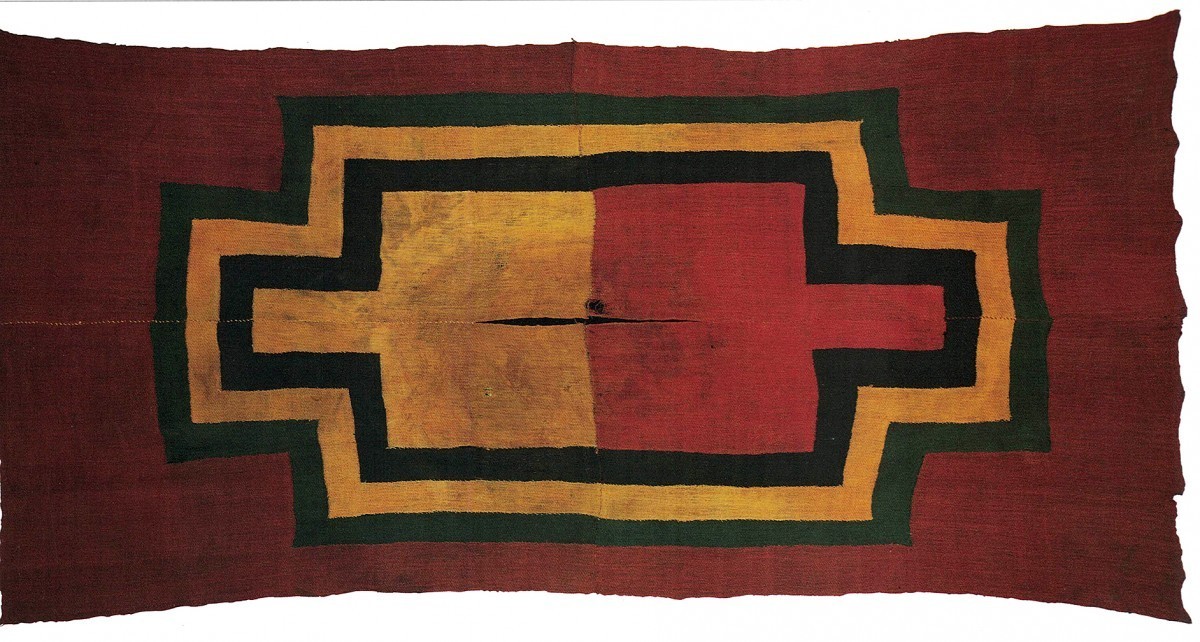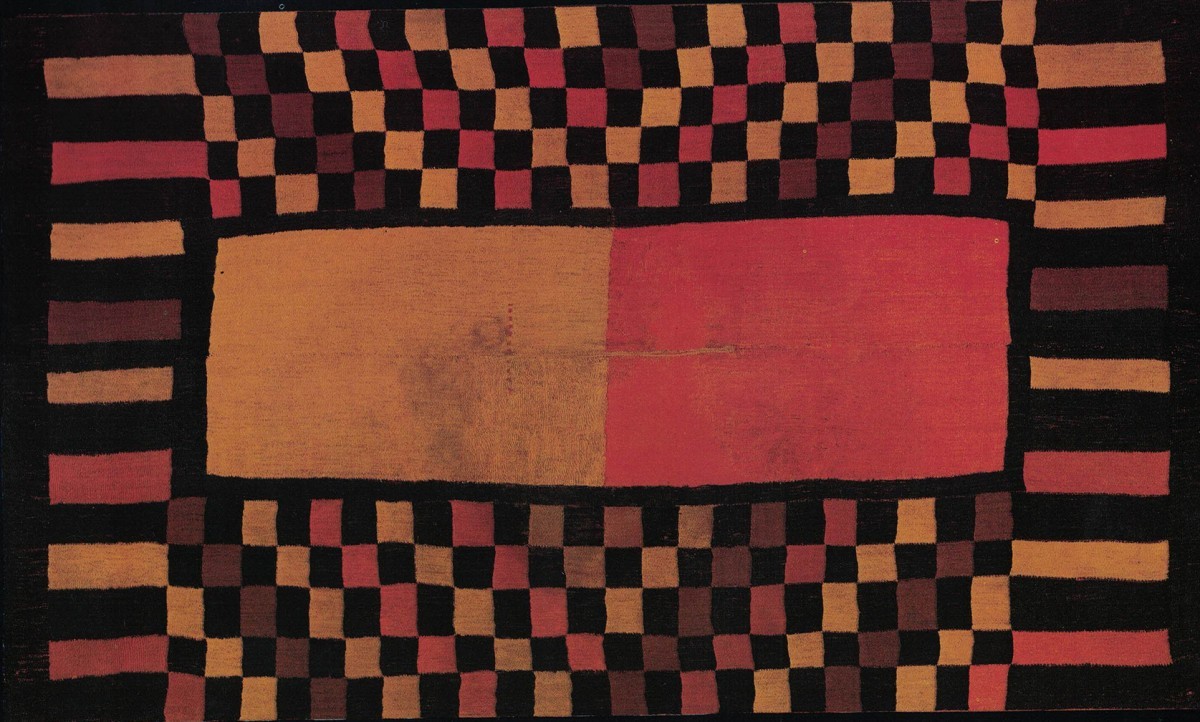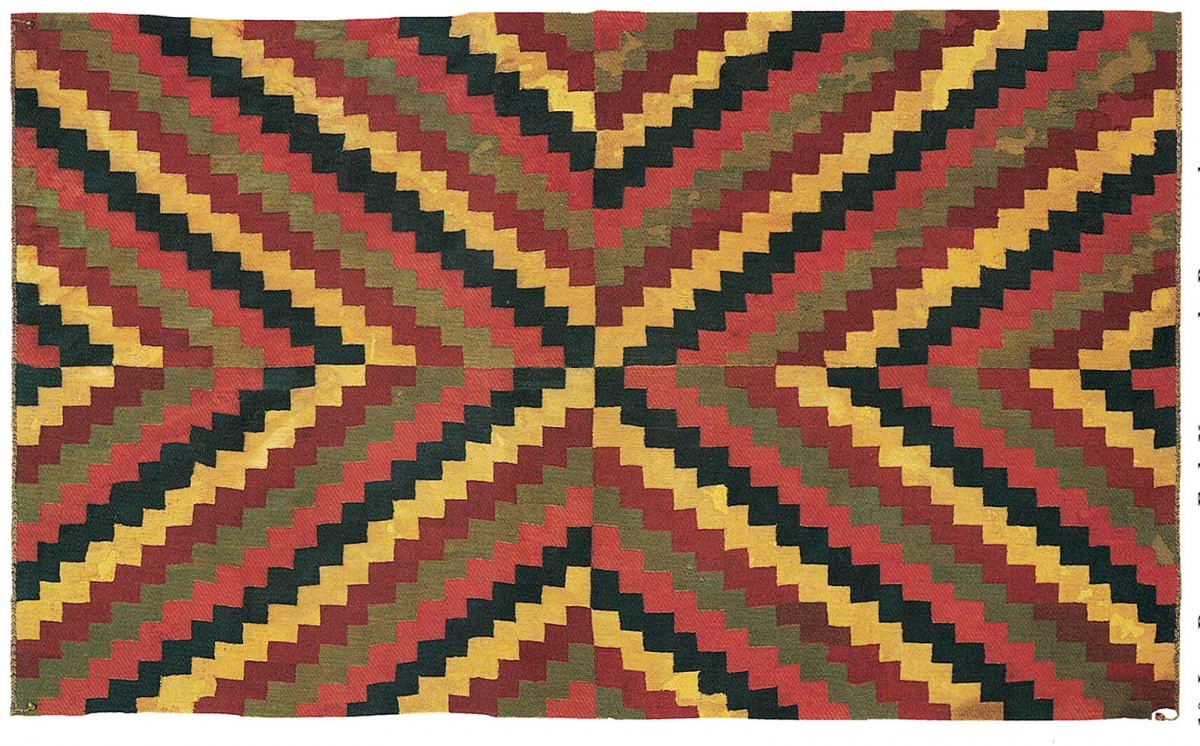Oriental Rugs Dictionary
Nazca Textile
The Nazca culture (also Nasca) was the archaeological culture that flourished from c. 100 BC to 800 AD beside the arid, southern coast of Peru in the river valleys of the Rio Grande de Nazca drainage and the Ica Valley.[1] Strongly influenced by the preceding Paracas culture[citation needed], which was known for extremely complex textiles, the Nazca produced an array of crafts and technologies such as ceramics, textiles, and geoglyphs. The Nazca are known for their technically complex textiles. The textiles were most likely woven by women at habitation sites from spun cotton and wool.[1] The textiles would have been made using a backstrap loom. This is similar to the way textiles are woven in the region today.[1] Textiles were woven with the common motifs earlier than they appeared painted on pottery. The dry desert has preserved the textiles of both the Nazca and Paracas cultures, which comprise most of what is known about early textiles in the region. Shawls, dresses, tunics, belts, and bags have been found through excavations at Cahuachi and elsewhere. Many textiles associated with the Nazca culture are garments that were included with grave goods found at burial sites. Almost every body found is wrapped (sometimes partially) in a textile as a part of burial ritual. These textiles are found with partial burials as well. Often piles of bones are found wrapped in a textile garment.[6] The deposits of dresses and shawls contained both high-status garments (with feathers, painting, embroidery) and plain garments, suggesting different social roles or responsibilities.
.jpg)


